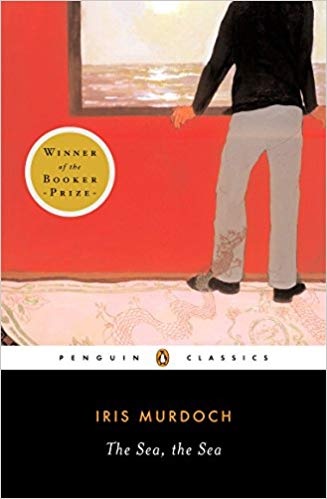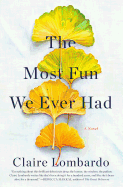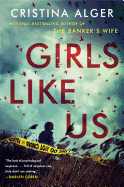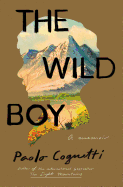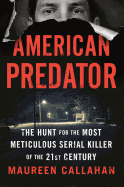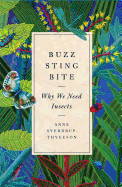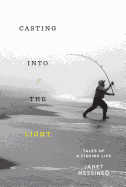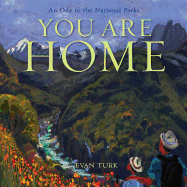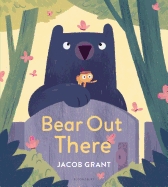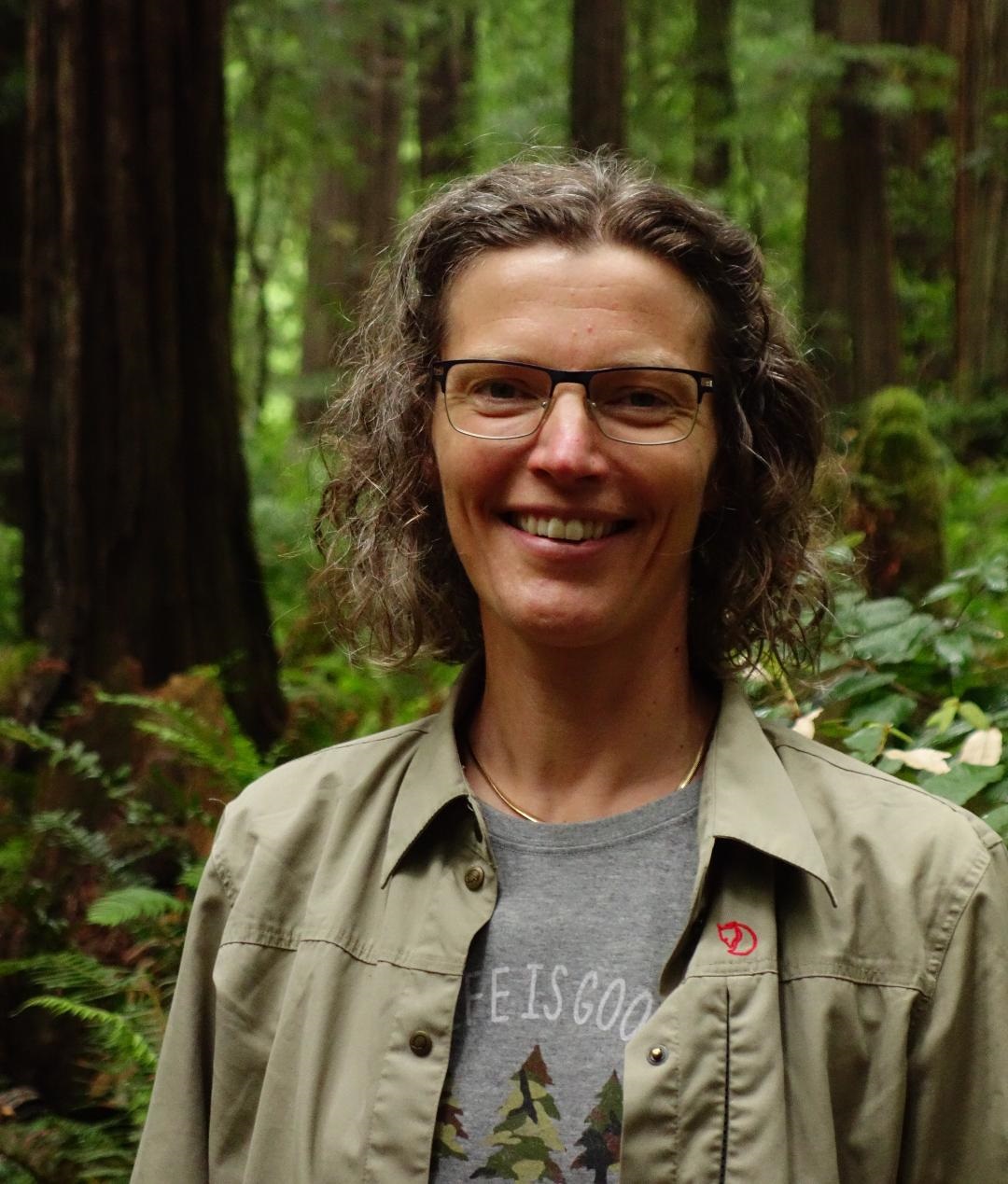 |
| photo: Kjetil Sverdrup-Thygeson |
Anne Sverdrup-Thygeson is a professor at the Norwegian University of Life Sciences. She is also a scientific adviser to the Norwegian Institute for Nature Research and holds a doctorate in conservation biology. In her debut, Buzz, Sting, Bite: Why We Need Insects (Simon & Schuster, $26; reviewed below), the ecologist introduces readers to basic insect biology, looks closely at bugs' relationships with plants and animals and explains how important they are to human life.
As a professor at the Norwegian University of Life Sciences, you're likely involved in all kinds of thoughtful, interesting discussions about the natural world. What drew you to the subject of insects?
I've always been curious about nature. When I was a kid, I used to spend a lot of time in the outdoors with my family. We went for hikes, made campfires, slept in a snow cave, picked berries or mushrooms in the autumn. My granddad taught me the names of flowers and the calls of the birds. I wasn't particularly interested in insects; all the fascinating details and connections in this magical jigsaw puzzle of nature appealed to me.
When I started my studies, I started out in humanities, with studies in history. Later I switched to biology, but they're not as different as you might think. Both look at the connections between the details and the bigger picture.
I still love to be outdoors, to marvel at the intricate details that connect nature and humans in a common web of life. Insects are an important part of this--they make up more than half of all known species on Earth. Life as we know it depends on these small creatures. It doesn't get more interesting than that!
One mind-boggling revelation in your book has to do with honeybees. They can distinguish between human faces!
Yes, it turns out that insects, especially social insects, are capable of doing stuff that we thought was impossible for organisms with a brain the size of a sesame seed, things such as honey bees distinguishing between human faces. It is doubtful that the bees relate to what they are actually seeing. They probably believe that faces are really funny flowers, with the darker areas of eyes and mouth representing recognizable patterns on "petals." But even more amazing, honey bees can remember a face they've become familiar with for at least two days.
Your book delves into the complex relationships that insects have with their natural environments. One interesting case study has to do with the golden poison frog in Colombia. What do insects have to do with this frog?
In the South American jungle, there lives a poisonous frog with the thoroughly appropriate Latin name Phyllobates terribilis. Its poison is one of the most powerful nerve poisons known to mankind. One frog contains enough poison to kill 10 grown men.
This little frog, no larger than a plum, used to be fairly common in the rain forest in parts of Colombia. The locals would carefully stroke their arrows along the frog's back to ensure that their arrowheads were poisonous enough to kill anything they might encounter.
The pharmaceutical industry got wind of this shocking yellow poisonous sensation in the rain forest. Early tests indicated that the poison was an incredibly effective painkiller when given in very tiny doses. What's more, because it affects the transportation of sodium through cell membranes, it could also be significant for our understanding of numerous diseases, including multiple sclerosis.
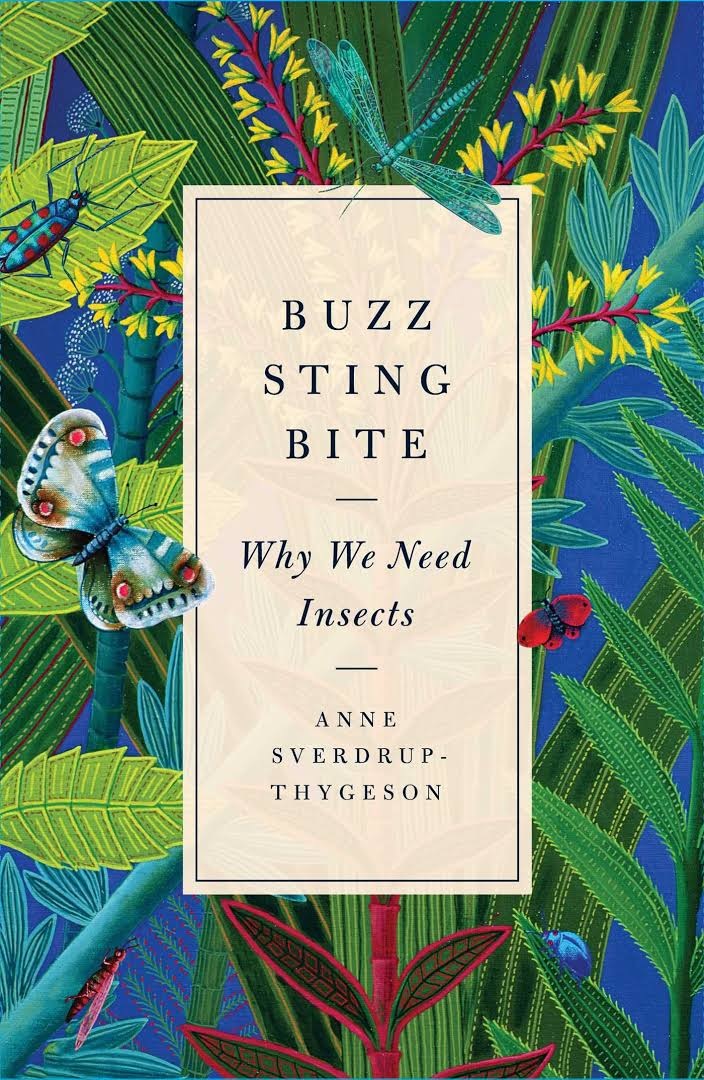 A few specimens were fetched from the jungle for closer examination, but when the catch arrived in the laboratory, the frog was no longer poisonous! As it turns out, their poison comes from the frog's diet of a specific species of soft-winged flower beetles. The frog lost its poison when it was no longer able to eat the beetles, which were found in its natural forest habitat.
A few specimens were fetched from the jungle for closer examination, but when the catch arrived in the laboratory, the frog was no longer poisonous! As it turns out, their poison comes from the frog's diet of a specific species of soft-winged flower beetles. The frog lost its poison when it was no longer able to eat the beetles, which were found in its natural forest habitat.
Sadly, due to rain forest logging, the frog is about to go extinct. Soon, the frogs and the opportunity to do further research into the active ingredients they produce could be lost forever.
Your book also makes clear how important insects are to human life. Broadly speaking, why do we need insects to survive?
In sum, they help plants set seed, are janitors that clean up our world and create soil and they serve as food for other animals. They are also important as predators and parasites that keep other species in check.
There have been a number of recent studies that suggest that insect populations are dropping dramatically. In your book, you suggest that some populations have dropped by 75%! What is causing this steep decline, and what might such a decline mean for humanity?
Yes, the number of 75% drop in biomass of flying insects is from a study of 60 small, German nature reserves, spanning approximately 30 years. The article that explained this got a lot of attention. Then, last year, after my book was published in Norway, another paper on insect decline hit the headlines, this time with a focus on Puerto Rico's rain forest. These studies and others were reviewed in a paper that came out early 2019, which looked into the factors behind the decline. The paper's conclusion is that the main culprit is our intensive land use--habitat loss and conversion to intensive agriculture and urbanization. Pesticide use, introduced species and climate change are other drivers that have negative effects.
I realize that the causes of insect extinction are so systemic that no one person alone can make a difference. But if you could ask readers to do--or stop doing--just one thing to help protect insects, what would you ask of us?
If I am to mention just one thing, it would be to change the way you talk about insects. I believe in knowledge, positive talk and enthusiasm. I would encourage people to be curious about bugs, to take the time to look and learn. I think it's important to teach children about all the strange and useful things insects do, and in general talk nicely about bugs. And if I could add a second thing: If you have a garden, you can make it a better place for insects by turning part of your lawn into a flower-rich meadow or prairie-type habitat. Grow native plants and be sure to avoid pesticides. --Amy Brady, reviewer
Anne Sverdrup-Thygeson Interview






 A few specimens were fetched from the jungle for closer examination, but when the catch arrived in the laboratory, the frog was no longer poisonous! As it turns out, their poison comes from the frog's diet of a specific species of soft-winged flower beetles. The frog lost its poison when it was no longer able to eat the beetles, which were found in its natural forest habitat.
A few specimens were fetched from the jungle for closer examination, but when the catch arrived in the laboratory, the frog was no longer poisonous! As it turns out, their poison comes from the frog's diet of a specific species of soft-winged flower beetles. The frog lost its poison when it was no longer able to eat the beetles, which were found in its natural forest habitat.